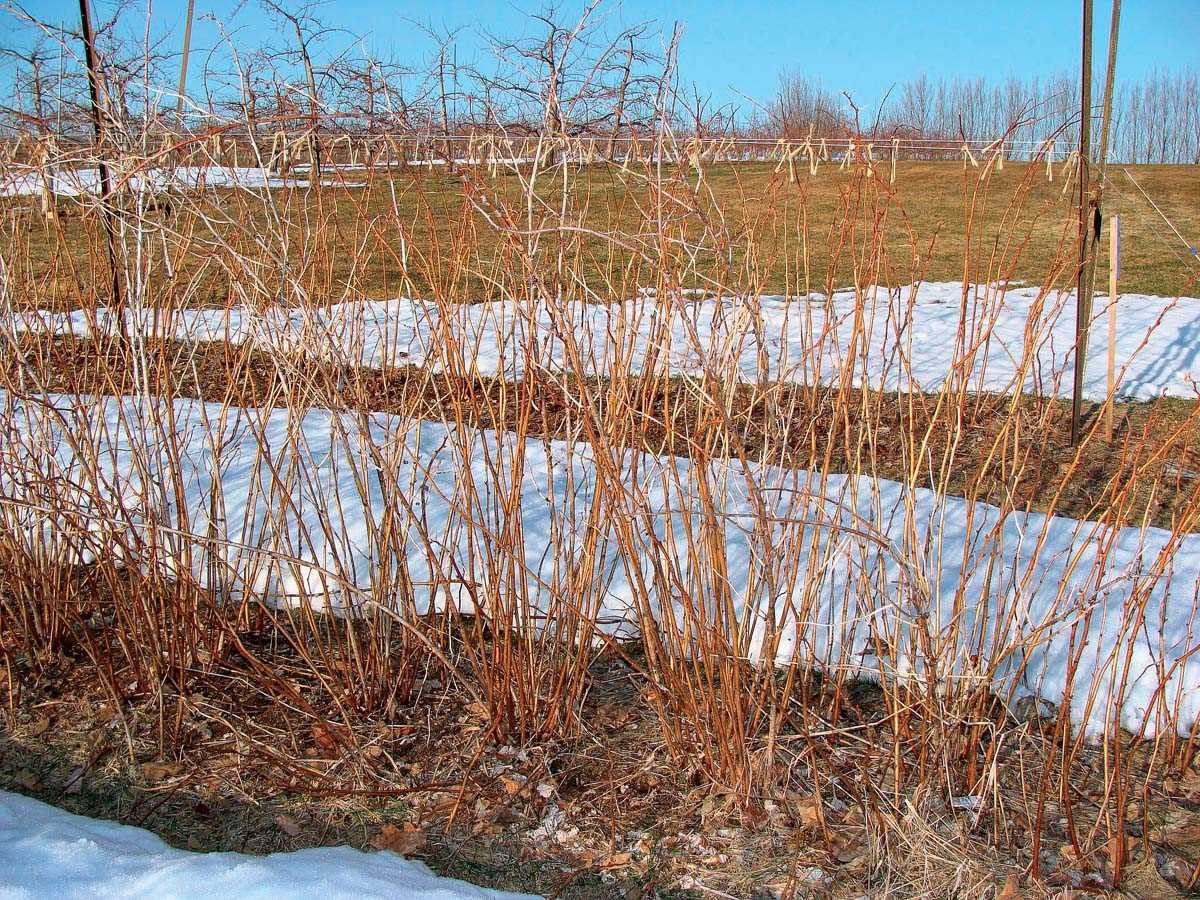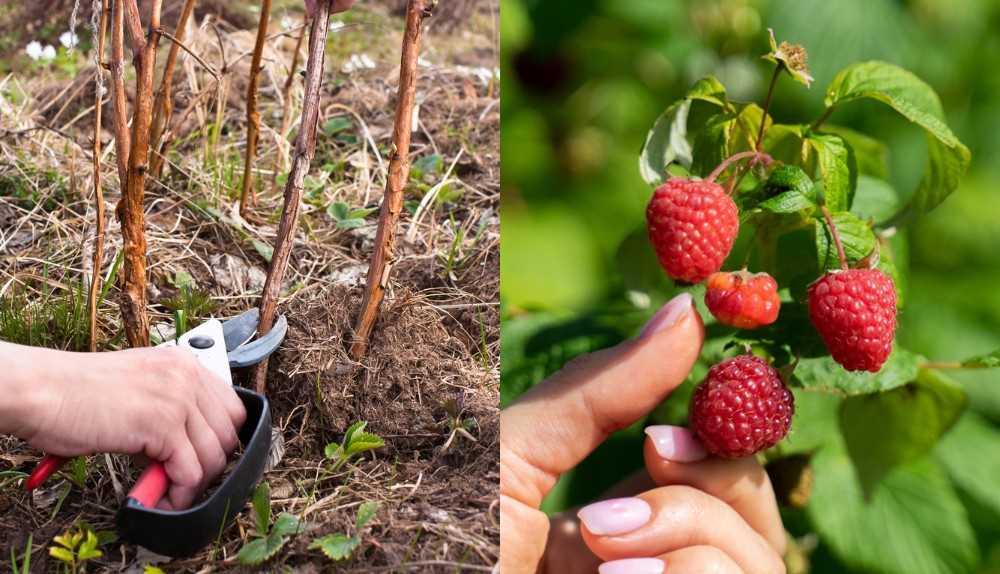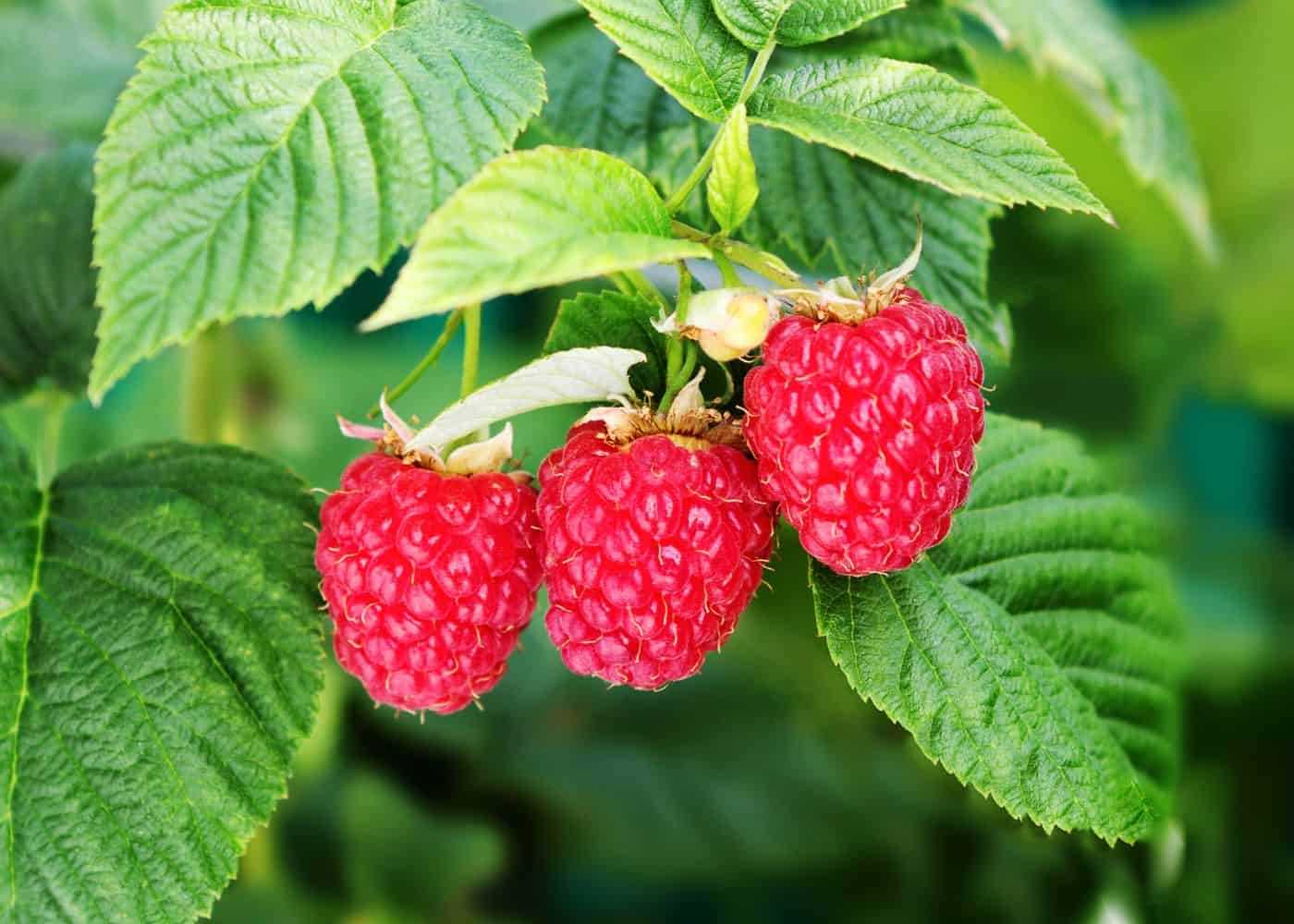- Understanding the Importance of Pruning Raspberries
- Benefits of Pruning Raspberries:
- Pruning Techniques for Raspberries:
- Consulting Local Resources:
- Factors Influencing the Need for Pruning
- Climate Considerations for Pruning Raspberries
- 1. Cold-Climate Regions
- 2. Mild-Climate Regions
- 3. Temperate-Climate Regions
- 4. Mediterranean-Climate Regions
- 5. Tropical-Climate Regions
- Exceptions to the Pruning Rule
- 1. Everbearing Raspberries
- 2. Cold-Climate Regions
- 3. Newly Established Plants
- 4. Neglected or Overgrown Plants
- Benefits of Pruning Raspberries
- 1. Increased Yield
- 2. Disease Prevention
- 3. Easier Harvesting
- 4. Better Plant Health
- Best Pruning Practices to Maximize Yield
- 1. Timing
- 2. Remove Dead Canes
- 3. Thin Out Excess Canes
- 4. Cut Back Lateral Branches
- 5. Support and Train Canes
- 6. Mulch and Fertilize
- Tools and Techniques for Pruning Raspberries
- Gloves
- Pruning Shears
- Loppers
- Clean and Sharp Tools
- Techniques
- Question-answer:
- Why is pruning raspberries important?
- When is the best time to prune raspberries?
- Do all regions require pruning raspberries?
- What are the exceptions to pruning raspberries?
- What are the benefits of not pruning raspberries in certain regions?
- What are the disadvantages of not pruning raspberries in certain regions?
- Video: Pruning Raspberries – Why? How? When? (2020)

Raspberries are a delicious and popular fruit that can be enjoyed fresh, frozen, or made into various preserves. Many home gardeners love to grow raspberries due to their relatively easy cultivation and prolific yields. However, when it comes to pruning raspberries, the rules can be a bit more complicated.
In most regions, pruning raspberries is considered an essential step in maintaining the health and productivity of the plants. Pruning helps to remove old, diseased, or damaged canes, as well as promote better air circulation and sunlight penetration. This can lead to larger, tastier berries and reduce the risk of pests and diseases.
However, there are exceptions to this rule, and in some regions, pruning raspberries is not necessary or even recommended. In areas with mild winters, such as the Pacific Northwest or parts of California, raspberries may not experience the same level of cold damage as in colder regions. As a result, the canes can remain productive for several years without pruning and continue to bear fruit abundantly.
It’s important to note that while pruning may not be necessary in these regions, some maintenance practices, such as thinning overcrowded canes and removing any dead or diseased wood, are still recommended. Additionally, regular fertilization and adequate irrigation are crucial for healthy raspberry plants, regardless of pruning practices.
Before making a decision about whether or not to prune your raspberries, it’s always best to consult local gardening resources or contact your local agricultural extension office. They can provide specific advice tailored to your region’s climate and growing conditions, helping you make the best decision for your raspberry plants.
Understanding the Importance of Pruning Raspberries
Pruning raspberries is an essential task for maintaining the health and productivity of the plants. It involves cutting back the canes, or stems, of the raspberry plant to promote new growth and encourage the development of berries.
Benefits of Pruning Raspberries:
- Increased Yield: Pruning helps to ensure that the energy of the plant is directed towards producing larger and juicier berries, resulting in a more abundant harvest.
- Disease Prevention: Regular pruning helps to increase airflow and sunlight penetration within the raspberry patch, reducing the chances of disease and fungal infections.
- Improved Plant Health: By removing old, damaged, or diseased canes, pruning helps to rejuvenate the raspberry plant and promote the growth of healthy new canes.
- Easy Harvest: Pruning helps to keep raspberry canes more compact and manageable, making it easier to access and harvest the ripe berries.
Pruning Techniques for Raspberries:
Pruning raspberries can vary depending on the specific type of raspberry plant and the region in which it is grown. However, there are a few general techniques that can be followed:
- Annual Pruning: It is recommended to prune raspberries annually during the dormant season, usually in late winter or early spring. This involves cutting back all of the canes that have already fruited, leaving only the healthy and vigorous canes for the next growing season.
- Thinning: To maintain the ideal spacing between canes and promote better airflow, it is important to thin out overcrowded areas by removing weak or damaged canes.
- Support System: Depending on the type of raspberry plant, it may be necessary to provide a support system such as trellises or stakes to keep the canes upright and prevent them from bending or breaking under the weight of the berries.
Consulting Local Resources:
While pruning raspberries is generally recommended, it is essential to consider the specific climate and growing conditions of your region. Some regions may have exceptions to the pruning guidelines due to the unique climate or variety of raspberry plants being grown. It is always best to consult local gardening resources or seek advice from experienced gardeners in your area to determine the best pruning practices for your raspberries.
| Region | Pruning Recommendations |
|---|---|
| Region A | Prune annually in late winter for best results. |
| Region B | Prune only when necessary to remove damaged or diseased canes. |
| Region C | Pruning not necessary due to the mild climate. |
Factors Influencing the Need for Pruning


Pruning raspberries is not always necessary in every region. The need for pruning can vary depending on several factors:
- Climate: The climate of a region plays a significant role in the need for pruning raspberries. In colder climates, where winter temperatures regularly drop below freezing, pruning is usually recommended to remove damaged or diseased canes and to promote air circulation. In milder climates, pruning may not be necessary as the canes can survive the winter without much damage.
- Variety: Different raspberry varieties have different growth habits and requirements. Some varieties are more vigorous and spread quickly, requiring more frequent pruning to maintain their shape and prevent overcrowding. Other varieties have a more compact growth habit and may not need pruning as frequently.
- Health: The overall health of the raspberry plants can also influence the need for pruning. If the plants are experiencing pest or disease issues, pruning can help remove affected canes and prevent further spread. Additionally, pruning can promote the growth of new, healthy canes.
- Yield: The desired yield of raspberries can also impact the pruning requirements. Pruning can help increase fruit production by encouraging the growth of new canes that will bear fruit in the coming season. However, if a smaller yield is sufficient, pruning can be minimal.
- Garden space: The available space in the garden can also affect the need for pruning. If the raspberry plants are growing in a limited space, pruning can help keep them contained and prevent them from spreading excessively. In larger areas, pruning may not be as necessary.
Considering these factors can help gardeners determine whether pruning is necessary for their raspberry plants. It is always advisable to research specific pruning recommendations for the particular variety and climate in which the raspberries are being grown.
Climate Considerations for Pruning Raspberries
When it comes to pruning raspberries, climate plays a crucial role in determining when and how to prune. Different regions experience varying weather patterns, which can affect the growth and development of raspberry plants.
1. Cold-Climate Regions
In cold-climate regions where winters are harsh and temperatures drop below freezing, pruning raspberries is essential. It helps protect the plants from frost damage and promotes healthier growth in the following season.
Pruning in cold-climate regions should be done during late winter or early spring, before new growth begins. This allows the plants to focus their energy on regenerating new canes and producing fruit.
2. Mild-Climate Regions
In mild-climate regions with relatively mild winters, pruning raspberries may not be necessary. The temperatures usually do not drop low enough to cause significant damage to the canes.
However, some light pruning can still be done during late winter or early spring to remove any dead or damaged canes and to stimulate new growth. This helps maintain the overall health and vigor of the plants.
3. Temperate-Climate Regions
In temperate-climate regions with moderate winters and no extreme temperature fluctuations, pruning raspberries can be done based on personal preference. Some gardeners choose to prune to tidy up the plants, while others prefer to leave them unpruned.
If pruning is desired, it can be done during late winter or early spring. This allows for the removal of any dead or diseased canes and encourages new growth and better fruit production.
4. Mediterranean-Climate Regions
In Mediterranean-climate regions with mild, wet winters and hot, dry summers, pruning raspberries is typically done during late winter or early spring. This helps remove any dead or weak canes and stimulates new growth.
Additionally, light summer pruning can be done to remove any excess growth and improve air circulation, which reduces the risk of fungal diseases.
5. Tropical-Climate Regions
In tropical-climate regions with warm, humid weather year-round, pruning raspberries may not be necessary. These regions typically do not experience frost or extreme temperature fluctuations that can harm the plants.
However, if desired, light pruning can be done during the cooler months to remove any dead or diseased canes and to promote new growth. Regular monitoring for pest and disease issues is crucial in tropical regions.
Overall, understanding the climate of your region is essential for determining the appropriate timing and extent of pruning raspberries. While some regions require regular pruning for plant health and productivity, others may only require minimal maintenance.
Exceptions to the Pruning Rule
While pruning raspberries is generally recommended for most regions, there are a few exceptions to this rule. In some specific cases, pruning may not be necessary or may need to be done differently.
1. Everbearing Raspberries
Everbearing raspberries are a type of raspberry plant that produce fruit on both first-year canes (primocanes) and second-year canes (floricanes). These varieties are often referred to as “two-crop” raspberries.
For everbearing raspberries, pruning is typically done in two stages. In early spring, the top 1/3 of the canes can be pruned to stimulate growth and encourage more fruiting. After the fall harvest, the floricanes that have already produced fruit can be pruned to the ground to make room for new primocanes.
It’s important to note that not all everbearing raspberry varieties require this type of pruning, so it’s best to consult specific pruning guidelines for the variety you are growing.
2. Cold-Climate Regions
In colder regions where winter temperatures consistently drop below freezing, it may be best to delay pruning until early spring. Pruning raspberries in late fall or winter can leave the plants more susceptible to cold damage, as the exposed canes are more likely to be affected by frost.
In these regions, it’s recommended to wait until the threat of severe cold has passed in early spring before pruning raspberries. This allows the canes to provide some protection to the crown and roots during the winter months.
3. Newly Established Plants


Newly planted raspberry plants require some time to establish their roots and become established before they can be pruned. Pruning too soon after planting can weaken the plants and inhibit their overall growth and development.
It’s generally recommended to wait until the second year of growth before implementing a pruning routine for newly established raspberry plants. This allows the plants to develop a strong root system and establish themselves before any pruning is done.
4. Neglected or Overgrown Plants
If you have neglected or overgrown raspberry plants, it may be necessary to do some heavy pruning to rejuvenate the plants. This can help to improve airflow, reduce disease incidence, and stimulate new growth.
When pruning neglected or overgrown raspberry plants, it’s important to remove any dead, damaged, or diseased canes first. Then, thin out the remaining canes to allow for better airflow. Finally, prune back the remaining canes to a manageable height, typically around 4-5 feet, to encourage new growth.
Keep in mind that heavy pruning can temporarily reduce fruit production for a season or two, but it will ultimately benefit the overall health and productivity of the plants in the long run.
Benefits of Pruning Raspberries
Pruning raspberries is an essential part of maintaining the health and productivity of the plants. It involves removing certain parts of the plant, such as old canes and diseased or damaged branches. While pruning may not be necessary in every region, there are several benefits to pruning raspberries in suitable regions.
1. Increased Yield
One of the main benefits of pruning raspberries is increased yield. Pruning helps to stimulate the production of new canes, which are the main source of fruit production. By removing old and unproductive canes, the plant can redirect its energy towards producing new, healthy canes that will bear more fruit. Additionally, pruning allows for better air circulation and sunlight exposure, which can also contribute to higher yields.
2. Disease Prevention


Pruning raspberries can help prevent the spread of diseases. By removing diseased or damaged canes, you can eliminate potential sources of infection. Pruning also allows for better airflow within the plants, which can help prevent the development of fungal diseases. Regular pruning can help keep the plants healthy and reduce the risk of diseases spreading throughout the entire raspberry patch.
3. Easier Harvesting


Pruning raspberries can make harvesting easier and more efficient. By removing excess foliage and old canes, you can improve access to the ripe fruit. This makes it easier to pick the berries without damaging the surrounding canes or the fruit itself. Pruning also helps to keep the plants more compact and tidy, making it easier to navigate within the raspberry patch.
4. Better Plant Health
Regular pruning promotes overall plant health. By removing old canes, you can reduce the risk of pests and diseases that often target weak or dying plant material. Pruning also helps to stimulate the growth of new, vigorous canes, which are less susceptible to pest infestations and diseases. Additionally, pruning allows for better light penetration and air circulation, which can improve the overall health and vitality of the plants.
In conclusion, while pruning raspberries may not be necessary in every region, it offers several benefits in suitable regions. Increased yield, disease prevention, easier harvesting, and better plant health are just a few of the advantages that come from regular pruning. It’s important to follow proper pruning techniques and timing to maximize these benefits and ensure the long-term health and productivity of your raspberry plants.
Best Pruning Practices to Maximize Yield
Pruning raspberries is an essential task for ensuring healthy growth and maximizing fruit yield. By removing dead or damaged canes and encouraging new growth, you can maintain the overall health and productivity of your raspberry plants. Here are some best pruning practices to help you achieve the best yield:
1. Timing
Knowing when to prune your raspberries is crucial. The best time for pruning depends on the type of raspberries you have, as well as the climate in your region. In general, late winter or early spring is the ideal time for pruning most raspberry varieties. However, some everbearing raspberries may benefit from a second pruning in late summer or early fall to encourage a second crop.
2. Remove Dead Canes
Begin by identifying and removing any dead or diseased canes. Dead canes are usually discolored, brittle, and easily snapped. These canes should be pruned at the base to prevent the spread of disease and promote the growth of new, healthy canes.
3. Thin Out Excess Canes
After removing the dead canes, assess the remaining canes for overcrowding. Thin out any excess canes, leaving only the healthiest and strongest ones. Overcrowding can lead to poor air circulation and increased risk of disease. Aim to have 4-6 canes per linear foot of row for optimal growth and fruit production.
4. Cut Back Lateral Branches
To encourage new growth and maximize fruit production, it is important to cut back lateral branches. These are the side shoots that grow from the main cane. Prune the lateral branches back to about 8-12 inches in length, leaving behind 2-3 buds on each branch.
5. Support and Train Canes
As your raspberry plants grow, it is important to provide support and train the canes. Use trellises, wires, or stakes to keep the canes upright and prevent them from sagging under the weight of the fruit. This will help maximize sunlight exposure and airflow, promoting better fruit development and reducing the risk of diseases.
6. Mulch and Fertilize
After pruning, apply a layer of organic mulch around the base of the plants to retain moisture, suppress weed growth, and provide nutrients. Additionally, fertilize your raspberry plants according to their specific needs to ensure optimal growth and fruit production.
Following these best pruning practices will help you maintain the health and productivity of your raspberry plants, ensuring a bountiful yield of delicious fruit.
Tools and Techniques for Pruning Raspberries
Pruning raspberries is an important task that helps promote healthy growth and increase fruit production. To prune raspberries effectively, you will need a few tools and techniques. Here are some essential tools and techniques for pruning raspberries:
Gloves
Before you start pruning raspberries, it is important to protect your hands. Gloves will not only keep your hands safe from thorns but also help you maintain a good grip on the tools.
Pruning Shears
The most common tool used for pruning raspberries is pruning shears or secateurs. These handheld tools have sharp blades that make clean cuts without damaging the canes.
Loppers
In some cases, pruning shears may not be sufficient to cut through thick canes. That’s when loppers come in handy. Loppers have long handles and strong cutting blades, allowing you to easily prune thicker canes.
Clean and Sharp Tools
It is essential to use clean and sharp tools when pruning raspberries. Clean tools help prevent the spread of diseases, while sharp tools ensure clean cuts and minimize damage to the canes.
Techniques
When it comes to pruning raspberries, there are a few techniques you can use:
- Annual pruning: This involves removing all the old canes that have already fruited and thinning out new canes to promote better airflow and sunlight penetration.
- Summer pruning: This technique involves removing the tips of the canes to stimulate lateral branch growth and increase fruiting potential.
- Thinning: Thinning involves removing overcrowded canes, allowing the remaining canes to receive more nutrients and develop larger, sweeter berries.
Remember to always follow the specific pruning guidelines for your raspberry variety and climate. Proper pruning techniques result in healthier and more productive raspberry plants.
| Time of Year | Pruning Tasks |
|---|---|
| Early spring | Remove dead and damaged canes |
| Late spring | Thin out new canes |
| Summer | Prune tips of the canes |
Question-answer:
Why is pruning raspberries important?
Pruning raspberries is important because it helps improve plant health, promotes better fruit production, and allows for better airflow and sunlight penetration.
When is the best time to prune raspberries?
The best time to prune raspberries is in late winter or early spring, before new growth begins. This allows the plant to recover quickly and minimizes the risk of disease.
Do all regions require pruning raspberries?
No, not all regions require pruning raspberries. In some regions with mild winters and little to no frost, raspberry plants may not need to be pruned at all.
What are the exceptions to pruning raspberries?
The exceptions to pruning raspberries are regions with mild winters and little to no frost. In these regions, the canes can be left in place and allowed to produce multiple crops for several years.
What are the benefits of not pruning raspberries in certain regions?
The benefits of not pruning raspberries in certain regions include less work for the gardener, as pruning can be time-consuming and labor-intensive. It also allows the plant to establish a strong root system and produce multiple crops over several years.
What are the disadvantages of not pruning raspberries in certain regions?
The disadvantages of not pruning raspberries in certain regions include reduced airflow and sunlight penetration, which can lead to increased disease and pest problems. It can also result in overcrowding and competition for resources among the canes.







